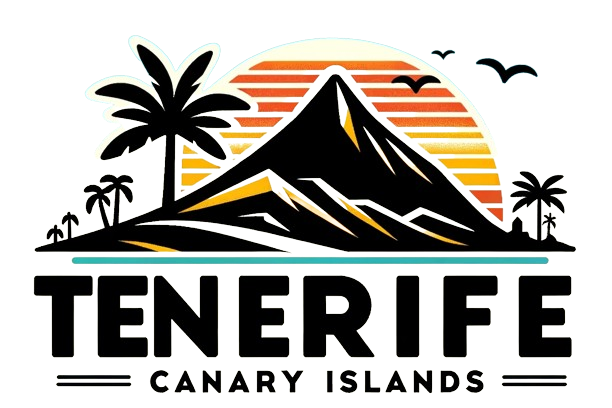Tenerife Conducts Comprehensive Volcanic Eruption Simulation Drill
On September 26, Tenerife took significant steps to enhance its preparedness for volcanic emergencies by conducting a large-scale simulation drill in Garachico. This exercise marks a pivotal moment for the island, which is known for its volcanic activity and has faced challenges in the past, particularly with the eruption on La Palma in September 2021.
Strengthening Community Resilience
In light of past volcanic events, particularly the one that affected La Palma on September 19, 2021, Tenerife has made substantial improvements to its emergency response protocols. The town of Garachico, situated in a high-risk volcanic zone, was chosen as the site for Spain’s inaugural extensive volcanic eruption drill. This event temporarily halted local activities, allowing the community to focus on this crucial exercise aimed at safeguarding lives and property.
The simulation was meticulously designed around a scenario involving a red alert due to rising seismic activity and land deformation. Various emergency situations were enacted, including a mock collision between a bus and a car, as well as the lockdown of students at El Tanque school. During this part of the drill, children practiced using masks as part of their emergency training, emphasizing the importance of preparedness from a young age. Local residents and actors played key roles in assessing the effectiveness of the response strategies throughout the drill, providing valuable feedback for future improvements.
Simulated Eruption Announcement
At approximately 08:30, a simulated press conference was conducted to announce a fictional volcanic eruption. Rosa Dávila, the president of the Cabildo, outlined the preventive measures that had been put in place, which included the evacuation of at-risk individuals from the municipalities of El Tanque, Santiago del Teide, and Garachico. This proactive approach highlights the importance of clear communication during emergencies.
Itahiza Domínguez, a seismologist and director of the National Geographic Institute of the Canary Islands (IGN), indicated that the hypothetical eruption would be triggered by increased seismic activity in the Cañadas del Teide, along with shallow earthquakes occurring at depths of 0 to 1 kilometer. The simulation anticipated a basaltic magmatic eruption, which is characteristic of the region’s volcanic activity. Montserrat Román, head of Civil Protection, emphasized the collaborative efforts among various authorities to inform residents about potential hazards and facilitate the evacuation of vulnerable populations, particularly in areas prone to earthquakes, pyroclastic flows, or landslides. Dávila reiterated that this exercise was intended to mimic a real volcanic event, compressing a typical eruptive timeline of three to four months into a mere five days, thereby testing the limits of the island’s emergency response capabilities.
Execution of Evacuation Procedures
Following the alarm activation at 09:00, evacuation procedures commenced at Muelle Viejo and the local church. By around 09:20, alerts were sent to the mobile phones of all residents across Tenerife using the ES-Alert system, which is designed to notify the public about evacuations, lockdowns, and other critical incidents. This system proved vital in ensuring that residents received timely information during the drill.
Muelle Viejo became the central coordination point for the evacuation, where approximately 200 evacuees gathered to provide their information before being relocated to a designated shelter. The drill also simulated a scenario involving multiple casualties, illustrating the chaos experienced by the injured and their families, as well as the challenges faced by emergency services responding to the shelter at the Municipal Pavilion. This aspect of the drill highlighted the importance of coordination and communication among various emergency response teams.
Conclusion of the Simulation
By noon, a message was dispatched to the residents of El Tanque to initiate their lockdown procedures. The exercise wrapped up with updates on additional simulated scenarios, which included reports of 188 homes affected and the eruption beginning in the Trevejos area, obstructing access to five roads in the Isla Baja. This necessitated the protection of Cultural Heritage sites, including the local church, underscoring the importance of preserving historical landmarks during emergencies.
After the drill, Rosa Dávila expressed confidence that Tenerife is now better equipped than ever to handle volcanic emergencies effectively. The successful execution of this simulation demonstrates the island’s commitment to safeguarding its residents and enhancing its emergency response strategies.
Key points
- Tenerife conducted its first large-scale volcanic eruption simulation drill in Garachico on September 26.
- The drill was prompted by the need for improved preparedness following the La Palma volcanic event in 2021.
- Simulated scenarios included a red alert due to seismic activity and the evacuation of vulnerable residents.
- Emergency procedures were tested, including the use of the ES-Alert system to notify the public.
- Approximately 200 evacuees participated in the drill, which included simulated accidents and emergency responses.
- The exercise aimed to compress a typical volcanic eruption timeline into five days for training purposes.
